- Clone
- 16A (See other available formats)
- Regulatory Status
- RUO
- Other Names
- Mucin-1, MUC-1, Episialin, HMFG antigen, MAM6
- Isotype
- Mouse IgG1, λ
- Ave. Rating
- Submit a Review
- Product Citations
- 6 publications
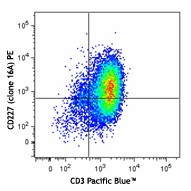
| Cat # | Size | Price | Quantity Check Availability | Save | ||
|---|---|---|---|---|---|---|
| 355603 | 25 tests | 104€ | ||||
| 355604 | 100 tests | 278€ | ||||
Mucin-1 (MUC-1), cell surface associated or polymorphic epithelia mucin, is a 500-1000 kD proteoglycan expressed by activated T cells, mucosal epithelial cells, and aberrantly expressed on most breast cancers. In normal cells, CD227 is heavily glycosylated, whereas in cancerous cells, the glycosylation is incomplete and premature sialation is also observed. The protein is anchored to the apical surface of the epithelial cell and functions as a lubricant to keep the cell hydrated and to protect against pathogens. It can also function as a signaling molecule by forming a MUC-1/SOS1/GrB2 complex. MUC-1 can interact with cancer antigens such as Her2/neu.
Product DetailsProduct Details
- Verified Reactivity
- Human
- Antibody Type
- Monoclonal
- Host Species
- Mouse
- Immunogen
- Jurkat cells transfected with MUC1
- Formulation
- Phosphate-buffered solution, pH 7.2, containing 0.09% sodium azide and BSA (origin USA)
- Preparation
- The antibody was purified by affinity chromatography and conjugated with PE under optimal conditions.
- Concentration
- Lot-specific (to obtain lot-specific concentration and expiration, please enter the lot number in our Certificate of Analysis online tool.)
- Storage & Handling
- The antibody solution should be stored undiluted between 2°C and 8°C, and protected from prolonged exposure to light. Do not freeze.
- Application
-
FC - Quality tested
- Recommended Usage
-
Each lot of this antibody is quality control tested by immunofluorescent staining with flow cytometric analysis. For flow cytometric staining, the suggested use of this reagent is 5 µl per million cells in 100 µl staining volume or 5 µl per 100 µl of whole blood.
- Excitation Laser
-
Blue Laser (488 nm)
Green Laser (532 nm)/Yellow-Green Laser (561 nm)
- Application Notes
-
This clone shows stronger binding to the glycosylated compared to the non-glycosylated peptide1.
- Application References
-
- Song W, et al. 2012. Int. J Oncol. 41:1977. PubMed
- Product Citations
-
- RRID
-
AB_2561643 (BioLegend Cat. No. 355603)
AB_2561644 (BioLegend Cat. No. 355604)
Antigen Details
- Structure
- 500-1000 kD proteoglycan (glycosylated form)
- Distribution
-
Activated T cells, mucosal epithelial cells, aberrantly expressed in most breast cancers
- Interaction
- Complexes with SOS1 and Grb2 in RAS signaling
- Ligand/Receptor
- ICAM-1 and Her2/neu (ErbB2)
- Cell Type
- Dendritic cells, Epithelial cells, T cells
- Biology Area
- Immunology, Innate Immunity
- Molecular Family
- CD Molecules
- Antigen References
-
1. Gendler SJ. 2001. J. Mammary Gland Biol. Neoplasia. 6:339.
2. Agrawal B, et al. 1998. Cancer Res. 58:4079.
3. Rahn JJ, et al. 2004. J. Biol. Chem. 279:29386. - Gene ID
- 4582 View all products for this Gene ID
- UniProt
- View information about CD227 on UniProt.org
Related FAQs
- What type of PE do you use in your conjugates?
- We use R-PE in our conjugates.
Other Formats
View All CD227 Reagents Request Custom Conjugation| Description | Clone | Applications |
|---|---|---|
| PE anti-human CD227 (MUC-1) | 16A | FC |
| Purified anti-human CD227 (MUC-1) | 16A | FC,ICC,IHC-P |
| PE/Cyanine7 anti-human CD227 (MUC-1) | 16A | FC |
| APC anti-human CD227 (MUC-1) | 16A | FC |
| TotalSeq™-D1250 anti-human CD227 (MUC-1) | 16A | PG |
| TotalSeq™-A1250 anti-human CD227 (MUC-1) | 16A | PG |
| TotalSeq™-B1250 anti-human CD227 (MUC-1) | 16A | PG |
| Brilliant Violet 421™ anti-human CD227 (MUC-1) | 16A | FC |
| Brilliant Violet 711™ anti-human CD227 (MUC-1) | 16A | FC |
| Brilliant Violet 785™ anti-human CD227 (MUC-1) | 16A | FC |
| TotalSeq™-C1250 anti-human CD227 (MUC-1) | 16A | PG |
| TotalSeq™-Bn1250 anti-human CD227 (MUC-1) | 16A | SB |
Customers Also Purchased

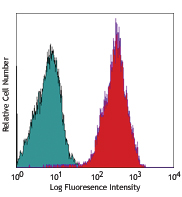

Compare Data Across All Formats
This data display is provided for general comparisons between formats.
Your actual data may vary due to variations in samples, target cells, instruments and their settings, staining conditions, and other factors.
If you need assistance with selecting the best format contact our expert technical support team.
-
PE anti-human CD227 (MUC-1)
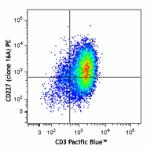
PHA-activated human peripheral blood lymphocytes (3 days) we... 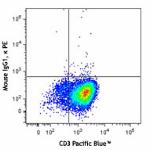
-
Purified anti-human CD227 (MUC-1)
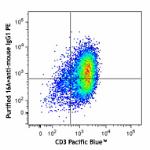
PHA-activated human peripheral blood lymphocytes (3 days) we... 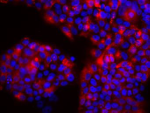
BT474 breast cancer cell line was stained with anti-human CD... 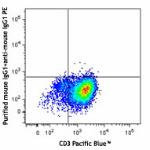

IHC staining using purified anti-MUC1 antibody (clone 16A) o... -
PE/Cyanine7 anti-human CD227 (MUC-1)

PHA-stimulated (3-days) human peripheral blood mononuclear c... -
APC anti-human CD227 (MUC-1)
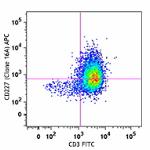
PHA-stimulated (3-days) human peripheral blood mononuclear c... 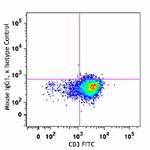
-
TotalSeq™-D1250 anti-human CD227 (MUC-1)
-
TotalSeq™-A1250 anti-human CD227 (MUC-1)
-
TotalSeq™-B1250 anti-human CD227 (MUC-1)
-
Brilliant Violet 421™ anti-human CD227 (MUC-1)

PHA-stimulated (3-days) human peripheral blood mononuclear c... -
Brilliant Violet 711™ anti-human CD227 (MUC-1)

PHA-stimulated (3-days) human peripheral blood mononuclear c... -
Brilliant Violet 785™ anti-human CD227 (MUC-1)

PHA-stimulated (3-days) human peripheral blood mononuclear c... -
TotalSeq™-C1250 anti-human CD227 (MUC-1)
-
TotalSeq™-Bn1250 anti-human CD227 (MUC-1)

 Login / Register
Login / Register 




















Follow Us